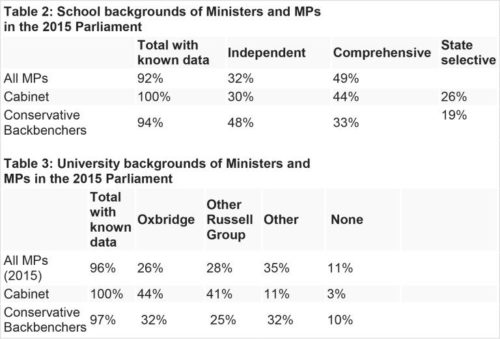Report Overview
The Sutton Trust analysed the educational background of Theresa May’s new cabinet.
- 30% of Theresa May’s new cabinet received a private education, the lowest proportion for a new Prime Minister’s cabinet since Attlee in 1945, Sutton Trust analysis published today reveals.
- With 44% educated at non-selective state schools, the new cabinet has a higher proportion of comprehensive educated ministers than David Cameron’s 2015 cabinet (43%) or the 2010 coalition cabinet (21%). With the addition of grammar school alumni, 70% are state educated.
- Cabinet ministers are still over 4 times more likely to have gone to a fee-paying school for all or part of their secondary education than the general population, of which 7% went to private schools.
- However, the proportion of independently educated ministers attending Cabinet is nearly half that of the previous cabinet (50%) and much lower than the coalition 2010 cabinet (62%). it is significantly less than earlier cabinets under Conservative Prime Ministers, John Major (71% in 1992) and Margaret Thatcher (91% in 1979). Tony Blair and Gordon Brown both had 32% of those attending cabinet privately educated, while 25% of Clement Attlee’s first cabinet had been privately educated.
On the 17th July, three days after the original post, it was announced that Baroness Anelay of St Johns will also be attending Cabinet as Minister of State at the Foreign & Commonwealth Office and the Prime Minister’s Special Representative on Preventing Sexual Violence in Conflict. Baroness Anelay was educated at Enfield County School a comprehensive, and attended the University of Bristol. This means 29% of the Cabinet is privately educated (rather than 30%) 43% went to Oxbridge (rather than 44%) and 43% went to a Russell Group university (rather than 41%). The Cabinet remains the most state educated cabinet since Clement Attlee’s in 1945.



